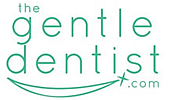Headaches and TMJ Pain Treatment
I would like to discuss an issue that affects over 10,000,000 Americans: Tension and Migraine headaches. We in the dental profession haven’t been given enough credit or is there an awareness of what we can do to help those who suffer from chronic facial pain. I have personally helped to treat many of our patients overcome their long term headaches using the methods described at the end of this article. I hope this information is helpful and that you can put it to use.
Tempromandibular Disorder (TMD), a condition that causes pain in the jaw joint, the TMJ (tempromandibular joint), and the muscles that control moving the jaw and chewing, affects an estimated 10 million Americans according to the National Institute of Dental and Craniofacial Research (NIDCR).
There are essentially six symptoms caused by TMD:
1) Your dentist notices that your upper and lower teeth fit together differently than they once did.
2) You have pain in your facial muscles or jaw joint when you chew.
3) Your jaw locks when you try to open your mouth, or you have limited side-to-side movement of the lower jaw.
4) The pain radiates from your jaw to you’re the temporal area of your face or neck. This may include a previous diagnosis of migraines from your physician.
5) Your chewing muscles are stiff especially when waking up in the morning.
6) You hear the telltale snapping, clicking or popping when you chew or close your mouth.
To be sure those symptoms are TMD and not a result of other causes, we will thoroughly examine your mouth and ask you several questions. TMD symptoms closely resemble the symptoms that cause ear and sinus infections, some headaches and facial nerve pain. Facial pain can increase to the point of becoming a migraine if left untreated.
What can You do about it?
Treatment options:
Options for the previously mentioned symptoms include bite splint therapy, NTI therapy and/or equilibration. All of these methods are drug free and therefore treat the causes and not just mask the symptoms.
Bite splints are mouth guards that snaps onto your top or bottom teeth. The other side is completely flat which, when properly adjusted allows you to grind without damaging the teeth. This also can help take the pressure off of the TMJ.
A smaller device is called the NTI. This FDA approved device is small, but very effective and is fitted to allow only the front teeth to contact. When only the front teeth contact the bodies ability to clench is eliminated. When clenching is reduced the muscles become relaxed, allowing the jaw joint to seat into its proper position. Our patients usually wear the NTI device during sleep when grinding and clenching can be at its highest level.
Typically the tension headaches and migraines start to significantly reduce once the muscles are relaxed.
Occasionally we need to fabricate a day time device to accompany the evening device for those patients who have severe migraines. We do find about 90% success rate over 8 weeks of use even for those who have had significant pain. These success rates are higher than medications designed to treat migraine headaches.
Once headaches are eliminated, we will typically attempt to create long term solutions for these joint and headache patients by slightly reshaping the biting surfaces of the teeth. If the teeth are misaligned, misshapen, or if the teeth have moved as a result of missing teeth, previously crowned teeth or orthodontics there will be an attempt to bring them into harmony by Equilibration.
At our office we have treated many patients and successfully eliminated their headaches and noisy jaw joints through this process. If someone you know suffers from migraine or tension headaches have them contact our office for more information.
